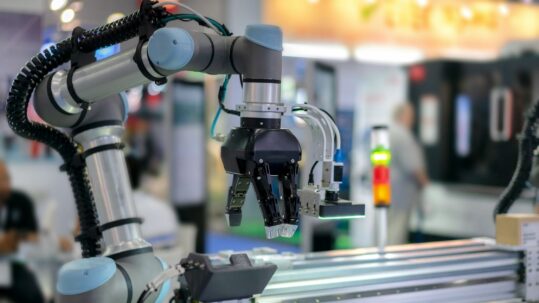Four things you need in your robotic packaging solution

Pick Up | Short insights from our automated food packaging specialists.
Author | Andrew Lightstead, Sales Manager, UK
Key Insights:
By itself, an industrial packaging robot is useless. To do its job, it needs to be part of an automation solution, and for that solution to deliver world class value it must be optimised in these four core functions:
| Identifying product to be handled by the robots
| Distributing product across the robots within the system
| Handling the product
| Providing an intuitive operator environment
It is only when you, as a buyer, have validated a supplier’s ability to deliver on these four core functions should you focus on the bespoke elements (layout/ hygiene etc.) that will create a solution best suited to your automation needs.
Product Identification
A well engineered product identification system eliminates waste and in turn secures a higher life time value from the solution.
Product identification is critical to being able to package 100% of sellable product. There are many ways products can be identified, from simple beam sensors to state of the art 3D vision, and they all have 2 key roles:
| Determine the position and orientation of the product – this impacts your ability to pick products effectively.
| Determine if it is a good product or not – this impacts the quality of the product the end consumer receives.
The first point is clear, you need to know where the product is for the robot to pick it. The accuracy of the technology implemented to determine product position directly impacts the ability of the robot to pick it.
The second point becomes more subjective. What is good? What is bad? Automation is black and white and the definitions of good and bad should be carefully considered and discussed with your automation provider during any automation project. False readings either way will have an impact on the quality of product your customers will experience.
Product Distribution
A well engineered product distribution control system ensures that no good product remains unpicked and all packaging is completely filled.
We have already implied a robot by itself is stupid. Reliable yes, Precise yes, but unless you tell it where to go and what to do it will sit there doing nothing.
As highlighted above the technology used to identify the product will begin this process by providing pick coordinates for all the good products. This information is communicated to the robot by the control software. Once the robot has picked the product, the control software will then inform the robot where to put it and at what orientation.
The core objective of this control software is to ensure EVERY good product is packed, and EVERY package is 100% complete. This is pretty straight forward when you have a solution with one robot. As product volume increases and you require multiple robots in a solution, with product and packaging conveyors moving at different speeds/ directions and interaction with all the ancillary processes (e.g. packaging delivery/ up & downstream integrations) the control system needs to be able to process complex algorithms that, when implemented correctly, ensure that no good product remains unpicked.
Product Handling
A well engineered robot-gripper combination secures higher speeds, no product damage and flexibility to changing requirements.
Every robot needs a hand. These hands are called many things, grippers, end of arm tooling, end effectors etc. but they are all there to allow the robot to pick up and move the product. I’m a car person, so for me the gripper is like a car tyre. The tyre is the only part of a car that touches the road; Bad tyre – poor handling car. The gripper is the only part of a robot that touches the product; Bad gripper – poor product control = waste.
The Robot – Gripper combinations objective is to transport the product from the pick position to the place position while:
| Maintaining the product integrity
| Keeping hold of and maintaining the product position within the gripper
| Minimising the kinetic impact on the robot movement
| Being hygienic
| Ensuring flexibility to changing requirements
Operator Interaction
Back to cars! There is no point having the world’s fastest car if the driver, even the most skilled, is unable to extract the maximum performance from it. The same applies to automation, even more so in fact, as the operators are typically seen as low skilled in the processes a packaging robot is typically installed to automate. If the operators and support teams (Engineering/ Hygiene etc) are not able to extract optimised performance from the automation it will fail to deliver the results expected.
This is all about making life easy for the operator. Clear and instructive Human Machine Interface (HMI). Open and Accessible design. Quality training and documentation etc.
A solution that is operator centric provides an easy to use, engaging environment that leads to overall better life time value from the solution.
Once you have validated the solution provider can deliver on these four core functions, then is the time to delve into the specific needs of your application.
Connect with Andrew Lightstead on LinkedIn.
Sign up to our Newsletter
Receive more insights from our automated food packaging specialists.









